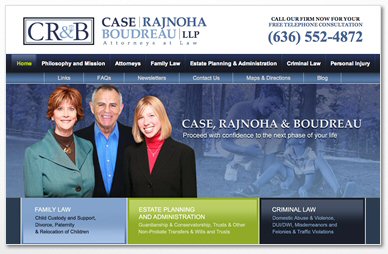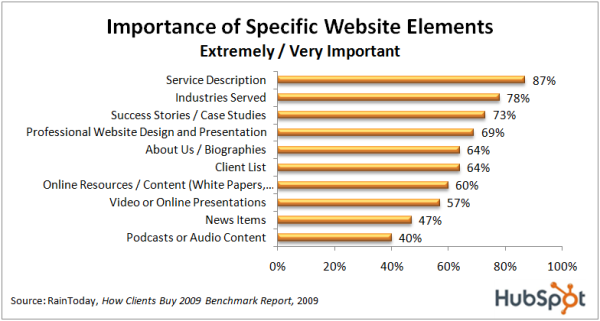 LexisNexis® Legal & Professional ( www.lexisnexis.com ), a leading provider of content and technology solutions, last Thursday announced results from the latest LexisNexis® Martindale-Hubbell® study on how international B2B law firms are using their websites as part of their marketing programs.
LexisNexis® Legal & Professional ( www.lexisnexis.com ), a leading provider of content and technology solutions, last Thursday announced results from the latest LexisNexis® Martindale-Hubbell® study on how international B2B law firms are using their websites as part of their marketing programs.
Based on initial qualitative interviews conducted in April 2012 and an online, quantitative survey in July, the study "The Use of Websites in Law Firm Marketing" reflects the views of 209 law firms across six world regions (excluding the United States). Amongst all participants, offline tactics currently account for just over two-thirds of all marketing spend, compared to 38% for online - though many respondents expect this to change in the future as online methods become more widely adopted in their marketing programs.
Steve Corney, senior digital marketing manager at LexisNexis International, commented: "The study shows that the legal industry is finally recognizing the role and importance of online content in lead generation, alongside traditional offline techniques. The 38% of marketing budgets allocated to online tactics now brings the legal sector slightly above the market average of 36%."*
As the table below illustrates, survey respondents across firms of all sizes do seem to be prioritizing their budget in online investment - reporting to allocate at least 3% of their marketing spend when developing a new website, and a further 1% on sourcing external support for the site once launched:
|
Size of legal practice
|
|
Small firms (1-20 lawyers)
|
|
Medium-sized firms (21-50 lawyers)
|
|
Larger firms (51+ lawyers)
|
|
|
Total annual marketing budget
|
|
Up to US$155,000
|
|
Up to US$775,000
|
|
Up to US$1.5 million(lower end) up to $7.5 million(higher end)
|
|
|
Website development budget(involving a major revamp)
|
|
Up to US$15,500(10% of total budget)
|
|
Up to US$31,000(4% of total budget)
|
|
In excess of US$46,500(3 % of total budget)
|
|
|
Ongoing external support budget(annual)
|
|
Up to US$1,550(1% of total budget)
|
|
Up to US$7,750(1% of total budget)
|
|
Up to US$15,500(1% of total budget)
|
|
Firms that responded to the survey perceive their website to be 'very effective' (34%) in helping to build their reputation and awareness of their brand. A disparity, however, lies in the role that their websites play to help generate new work. Here respondents are seemingly more ambivalent, with more than one third (36%) feeling that their website fails to sufficiently support lead generation - though this view was more prevalent among respondents from smaller law practices and firms that had not revamped their website for more than three years. On average, all firms surveyed tended to run their websites for two to three years before considering a re-design.
A quarter of all respondents report taking a formal approach to managing content on their website, with 25% (small, medium and large firms) using a content calendar to schedule regular updates, whilst the majority (66%) have yet to put this structure in place. When asked about the most popular content on their website, lawyer biographies are the most visited pages (85% of respondents), followed by information about practice area/sector expertise (52%) and thought leadership articles, case histories, etc. (50%).
The popularity of such content helps to explain why respondents also ranked online legal directories (61% 'very' and 'somewhat' effective) as the third most effective lead generation tactic, behind their website (74%) and Search Engine Optimisation (SEO, 62%). Adding relevant content about their lawyers, market expertise and thought leadership to online directories provides firms with further SEO benefits beyond their own website and helps to surface their content to a wider online audience to help prove credibility and generate new leads.
Whilst 71% of firms do take time to track how content on their website is used, many recognise that there is room for improvement in this area. Of these firms, only 11% report extensively using the available reporting tools and data to help measure effectiveness and return on investment, whilst 43% make little or no use of the data available.
Derek Benton, director of International Operations at Martindale-Hubbell, commented: "Technology is one of the factors that is changing the competitive landscape in the legal sector. It is positive to see how firms are using relevant content on their own website and third party sites to help produce leads more cost effectively, rather than rely only on offline channels. The challenge for marketers is to use the available reporting tools to monitor engagement and continually measure and improve the impact of online content to deliver the best return on investment."
Download the full report of "The Use of Websites in Law Firm Marketing: Examining how corporate law firms use their websites in marketing and business development" here.
*Source: "The Marketing Budgets 2012 Report", Econsultancy, in association with Experian Marketing Services, Feb 2012.
About LexisNexis Legal & Professional
LexisNexis® Legal & Professional ( www.lexisnexis.com ) is a leading global provider of content and technology solutions that enable professionals in legal, corporate, tax, government, academic and non-profit organizations to make informed decisions and achieve better business outcomes. As a digital pioneer, the company was the first to bring legal and business information online with its Lexis® and Nexis® services. Today, LexisNexis Legal and Professional harnesses leading-edge technology and world-class content, to help professionals work in faster, easier and more effective ways. Through close collaboration with its customers, the company ensures organizations can leverage its solutions to reduce risk, improve productivity, increase profitability and grow their business. Part of Reed Elsevier, LexisNexis Legal & Professional serves customers in more than 100 countries with 10,000 employees worldwide.
Martindale-Hubbell® helps international law firms to enhance their online presence and drive more prospect enquiries through professional profiles on martindale.com® and coordination of Martindale-Hubbell lawyer ratings. martindale.com is a leading online law directory with over 13 million unique visitors every year.
 Steven Long provides some advice for swimming with sharks when you are a big attorney in a small pond.
Steven Long provides some advice for swimming with sharks when you are a big attorney in a small pond.
 I was just on a webinar about the
I was just on a webinar about the  From my article in
From my article in .jpg)




